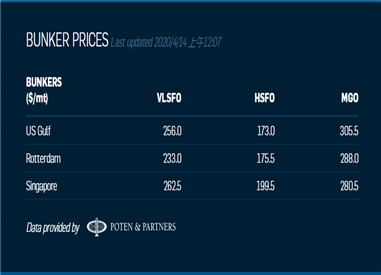 Opec cuts and weak oil demand to hit tanker rates
Opec cuts and weak oil demand to hit tanker rates
Weakening global oil demand due to the coronavirus pandemic and production cuts by the Organization of Petroleum Exporting Countries is likely to keep downwards pressure on tanker charter rates throughout this year
WEAKENING global oil demand and production cuts by the Organization of Petroleum Exporting Countries will keep downward pressure on tanker charter rates throughout this year, according to analysts.
In an attempt to improve the balance in the global oil market, the 23-country Opec+ alliance announced its largest-ever production cut of 9.7m barrels per day effective from May 1 until June 30 this year, with October 2018 output levels used as the baseline for all members except for Saudi Arabia and Russia.
The production cuts would reduce to 7.7m barrels per day, effective from July 1, 2020 for the rest of the year and then decrease further to 5.8m barrels a day effective January 1, 2021 until April 30, 2022. This is subject to review in December 2021.
However, Iran, Venezuela, and Libya are exempt from the cuts.
The outbreak of coronavirus and the ensuing sharp decline in oil demand, coupled with an ongoing price war between Saudi Arabia and Russia, had brought oil prices to the brink.
As the pandemic prolongs itself, there are estimates that it could knock out as much as a third of global oil demand.
“As demand for oil tankers mainly stems from transportation of oil, we estimate a massive 11% year-on-year drop in transportation demand for tankers for the remainder of the year from the reduced oil supply,” Norwegian investment bank Cleaves Securities said in a recent note.
Shipbroker Braemar ACM had similar views and said that tanker demand is likely to soften as spot fixing for cargoes to be loaded in the first week of May will start in earnest this week. Cargo availability in Middle East Gulf region is likely to be 4.7m barrels a day lighter versus the average of the first quarter 2020 as production cuts start to reduce supply.
Still, there is strong short-term support for oil tankers from storage economics, Cleaves analyst Joakim Hannisdahl said, “but the oil tanker demand outlook from second half of this year until 2022 has deteriorated significantly from lowered oil supply and an upcoming destocking cycle.”
Against an estimated onshore spare storage capacity of approximately 900m barrels as of end-March, Cleaves forecast 948m barrels of petroleum oversupply by end-August, which means about 23 additional very large crude carriers-equivalents are needed as floating storage, rising to 30 by May 2021, representing 1.6% of the total oil tanker fleet.
These numbers are however highly uncertain, especially with regards to the size of spare capacity and the potential impact of inertia and inefficiencies in the petroleum infrastructure, Mr Hannisdahl noted. “In this scenario, required additional floating storage would likely be higher and not as binary, which fits well with the large increase in tankers being employed on storage lately.”
Today's Bunker Prices:



